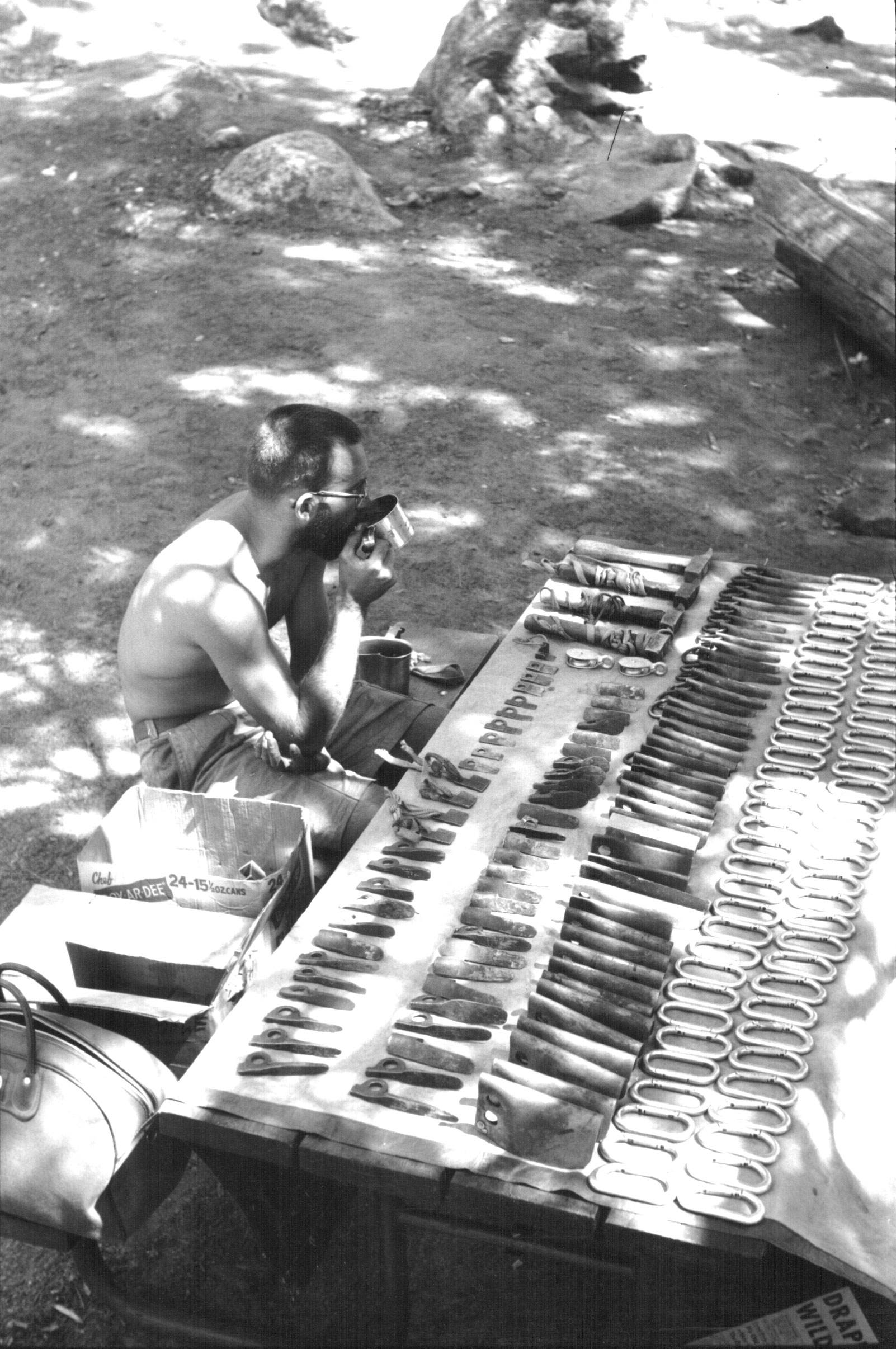 |
||
|
ONE CUP OF TEA, 1960 |
||
|
The final preparation to
climb El Capitan was to gather the party’s hardware together into one
selection. Here, at the Camp
4 table, Robbins lays out the pitons and carabiners that will be carried
on the second ascent of the Nose in September, 1960. These
include: knifeblades,
hand-forged Lost Arrows, Bugaboos, standard ring angles, and Bongs to 4
inches. Most of these pitons
were handmade by Chouinard from 4130 steel and 7075 aluminum.
These tough alloys enabled hundreds of placements and removals
without deformation. On this
climb alone many of these pitons would be placed 30 times.
None were left in place in adherence to our leave-no-trace
philosophy. Also carried
were 60 quarts of water, chocolate, salami, cheese, gorp, and bivouac
gear. It was an exciting
moment.
If successful, this would be the first continuous ascent of El
Capitan.
Royal and Liz Robbins describe this place, Camp 4, the campground
that served as a launch pad for our climbs and, I believe, also for our
lives. Camp
4 is situated on the north side of the road just across from Yosemite
Lodge. It is, and always
was, a scruffy place. That’s
one of the reasons we like it so much:
it wasn’t neat and orderly like other campgrounds in the
Valley. When we first
went there, in the early 1950’s, it was already the climbers’ camp,
a spot dotted with large boulders and with campsites in irregular
places. I guess the Park
Service thought it was good enough for climbers.
They were right. We
loved the boulders and were happy to have a spot on the ground to throw
our sleeping bags. We could
find a table for our campsite, and if we didn’t like where it was we
would move it. Camp 4 was
our “home”, our refuge from the “world out there.”
The 1960’s were a time of great upheaval in society, with war,
protests and universities shut down.
But we climbers mostly ignored it.
We concentrated on the walls of Yosemite.
And we spent a lot of time in Camp 4, talking about literature,
philosophy, girls, life in general, and of course, our next climb.
(Royal Robbins, Camp 4 Restaurant (Modesto, CA) Menu) Sometimes
things that make no sense on the surface make perfect sense inside. At
first Camp 4 was just a dusty landscape:
cluttered tables, dirty tents, people coming and going.
Yet something there seemed to hum with a raw, unselfconscious
honesty. As the
climbers gathered at dusk, this sensation became almost tangible.
Whatever the energy was, I wanted some of it.
Here, individuals were what they were, like it or not.
When someone asked me if I wanted to go on a little climb, I said
yes…. Initially
Royal Robbins reminded me of a Berkeley professor.
After climbing with him on Cathedral Peak, I realized this aloof,
quiet, contemplative demeanor concealed intensity and passion.
Royal required unproven feats of his imagination, spiritual and
physical tests not yet dreamed of – a need that would drive him to
make ascents other people couldn’t comprehend.
Climbing was new to me, but the integrity underlying Royal’s
pursuits was something I knew I could rely upon in any circumstance.
To the bewilderment of my family and friends back home, I adopted
his eccentric-seeming way of life. (Liz
Robbins, Alpinist 23, Spring 08) ONE CUP OF TEA, Robbins
sorts hardware for the Nose of El Capitan, Yosemite Valley, California,
second ascent, seven days, September 1960, by Royal Robbins, Chuck
Pratt, Joe Fitschen, and Tom Frost.
|
||